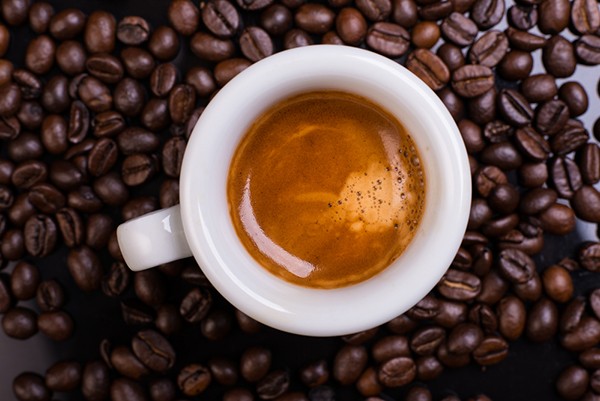Espresso is not merely a beverage—it's an experience that transcends the act of drinking coffee. My first encounter with espresso occurred in a charming café in Rome, tucked away along the cobbled streets. It was a warm afternoon, and I watched in awe as the barista expertly pulled a shot of espresso—a moment that felt both artful and scientific. I expected a quick caffeine boost, but what I received was an intricate and powerful flavor profile that left me intrigued by the craftsmanship behind the cup. That day marked the beginning of my deep appreciation for the world of espresso, where culture, precision, and tradition converge.
The Magic Behind Espresso’s Flavor
Espresso stands out not only for its rich, intense flavor but also for the precision involved in its creation. At its core, espresso is a concentrated coffee shot made by forcing hot water under high pressure through finely-ground coffee. This brewing technique extracts flavors more effectively than other methods, producing a cup that is bold, complex, and full-bodied.
One of the defining features of espresso is the crema—the golden-brown foam that forms on top of a well-pulled shot. This foam is a sign of a perfect extraction, ensuring that the oils from the coffee beans have been properly released. The crema adds a silky texture and subtle sweetness, which counterbalances the espresso’s natural bitterness, creating a harmonious balance of flavors.
Espresso’s Italian Origins
Espresso’s journey begins in Italy in the late 19th century. While Angelo Moriondo created the first espresso machine in 1884, it was Luigi Bezzera and Desiderio Pavoni who refined the technology, making it widely accessible. This innovation revolutionized coffee consumption, fitting perfectly into Italy's fast-paced urban culture. Espresso bars became more than places for coffee; they became gathering spots for conversation and community.
During a visit to Milan, I observed how espresso plays an integral role in Italian daily life. Italians typically enjoy their espresso in quick, ritualistic moments—at the counter, exchanging pleasantries with the barista before moving on with their day. This daily ritual highlights how espresso is not just a drink but an important social act.
Recreating the Espresso Ritual at Home
Inspired by my time in Italy, I decided to bring the art of espresso into my own home. I invested in an espresso machine, a sleek and functional centerpiece for my kitchen. Learning to brew the perfect shot was a process of trial and error. I faced frustrations—bitter, over-extracted shots that failed to match the exquisite ones I had in Rome. But with persistence and attention to detail, I learned to adjust the grind size, tamp pressure, and water temperature, eventually mastering the delicate balance required to create the perfect espresso shot. The process became a daily ritual, connecting me to the time-honored traditions of coffee craftsmanship.
Espresso as the Base for Coffee Creations
Espresso serves as the foundation for many of our favorite coffee drinks. From the sharp, invigorating espresso macchiato—a shot of espresso topped with a dollop of steamed milk—to the creamy cappuccino, espresso is at the heart of it all. The latte, a versatile favorite, allows for endless customization, yet the espresso remains central, providing the drink with a robust and rich flavor, even when altered with syrups or different types of milk.
Understanding Bean Origins and Roast Profiles
As my interest in espresso deepened, I began exploring the origins of the coffee beans that form its essence. Coffee beans from different regions can drastically alter the flavor profile of an espresso shot. For example, Ethiopian beans often bring bright, fruity flavors, while Brazilian beans tend to produce nutty, chocolatey notes. The roasting process also plays a crucial role: lighter roasts highlight the original characteristics of the bean, while darker roasts bring out more caramelized flavors. This exploration of bean origins and roast profiles has opened my eyes to the diverse flavors espresso can offer.
Sustainability in the Espresso World
As my passion for espresso grew, so did my awareness of the broader impact of coffee cultivation. I sought out roasters who prioritize fair trade and sustainable farming practices, ensuring that the people behind my favorite beans were receiving fair compensation. Knowing that my daily espresso supported ethical practices added a deeper layer of meaning to my ritual, connecting me not only to the drink but to the global community involved in its creation.
The Science Behind a Perfect Shot of Espresso
The creation of a perfect shot of espresso is as much a science as it is an art. Precision is key—each shot typically requires 7 to 9 grams of coffee, with the extraction process taking between 20 and 30 seconds. Variables such as grind size, water temperature (around 93°C or 200°F), and pressure (around 9 bars) must be meticulously controlled. Even the smallest deviation can result in a shot that is either too bitter or too sour, making espresso brewing a delicate dance of precision. Mastering this balance deepens my appreciation for baristas and their ability to produce perfect shots seemingly effortlessly.
Alternative Brewing Methods for Espresso Lovers
While a traditional espresso machine delivers the ultimate espresso experience, I’ve also explored other methods that offer a similarly intense flavor profile. The Moka pot, often dubbed the stovetop espresso maker, uses pressure to brew coffee—though at much lower levels than an espresso machine. This makes it an accessible way to enjoy a concentrated shot without the high investment of an espresso machine. The AeroPress is another fantastic option, offering flexibility in brewing styles and delivering a strong, rich cup of coffee, making it ideal for travel or when away from my espresso machine.

Sharing Espresso with Loved Ones
One of the greatest joys I’ve found in my espresso journey is sharing it with others. Hosting gatherings where I can serve a variety of espresso-based drinks—macchiatos, lattes, cappuccinos—has allowed me to introduce friends and family to the richness and complexity of espresso. There’s something special about seeing someone’s reaction to their first sip of perfectly crafted espresso. It often sparks conversation, not just about coffee, but about travel, culture, and the simple pleasures of life.
Espresso's Impact on My Broader Culinary Experience
Espresso has profoundly influenced my appreciation for other aspects of food and drink. The refined palate I’ve developed through tasting different espresso shots has heightened my ability to discern subtle flavors in food and wine. A glass of red wine, for example, now reveals its fruity undertones, while a dish may offer smoky nuances that I might have overlooked before. My passion for espresso has, in many ways, enriched my entire culinary experience, teaching me to pay closer attention to detail in all areas of gastronomy.
:max_bytes(150000):strip_icc()/__opt__aboutcom__coeus__resources__content_migration__serious_eats__seriouseats.com__2018__06__20180613-coffee-vs-espresso-vicky-wasik-3-1500x1125-418fa2a14e7249b18040c2c34bf8569c.jpg)
Conclusion: The Lasting Impact of Espresso
In reflection, espresso has become more than just a drink to me—it’s a journey that touches on history, culture, science, and human connection. Every shot tells a story, from the farmers who cultivate the beans to the baristas who perfect the extraction. Espresso is a constant reminder of life’s small pleasures, and how much deeper our experiences can become when we approach them with passion and curiosity. Whether enjoyed in the hustle and bustle of a Roman café or in the quiet of my kitchen, espresso remains a cherished daily ritual, a blend of precision, artistry, and joy.
FAQs
Q: What differentiates espresso from regular coffee?
A: Espresso is made by forcing hot water under high pressure through finely ground coffee, resulting in a concentrated, intense shot. Regular coffee is brewed using coarser grounds and lower pressure, producing a less concentrated drink.
Q: How much caffeine is in a shot of espresso?
A: A standard shot of espresso contains around 63 milligrams of caffeine, compared to 95 milligrams in an 8-ounce cup of brewed coffee. Because espresso is more concentrated, it contains more caffeine per ounce.
Q: What is crema, and why is it important?
A: Crema is the golden-brown foam that forms on top of a freshly pulled shot of espresso. It indicates proper extraction and contributes to the shot's smooth texture and flavor balance.
Q: Can you make espresso without an espresso machine?
A: While traditional espresso requires an espresso machine, methods like the Moka pot or AeroPress can produce similarly rich, concentrated coffee, though they don’t generate the same pressure as a machine.
Q: What type of beans are best for espresso?
A: While espresso can be made with any type of coffee bean, medium to dark roasts are most commonly used for their rich, full-bodied flavors. The choice of beans depends on personal preference and desired flavor profile.
